Dia de los Muertos, the Day of the Dead, is a mesmerizing celebration that unfolds with vibrant marigolds, flickering candles, and the sweet scent of pan de muerto in the air. From October 31st to November 2nd each year, it transcends the boundaries of life and death, inviting us to honor and celebrate our departed loved ones. Join us as we uncover the origins, traditions, and contemporary interpretations of this enchanting celebration, witnessing how Dia de los Muertos transforms grief into a joyful tribute to the enduring spirit of life and love.
What is the Day of the Dead?
Dia de los Muertos, or the Day of the Dead, is a Mexican cultural celebration that honors and remembers deceased loved ones. It is a vibrant and spiritually significant occasion where families create ofrendas (altars) adorned with photographs, candles, marigolds, and the favorite foods and possessions of the departed. This festival is a fusion of indigenous traditions and Catholicism, emphasizing the belief that death is not the end, but a continuation of life's cycle, making it a time for joyous remembrance and celebration.
History and origins of Dia de los Muertos
The origins of of Dia de los Muertos can be traced back to indigenous Mesoamerican cultures, particularly the Aztecs, who celebrated a similar holiday dedicated to the goddess Mictecacihuatl, the Lady of the Dead. With the Spanish colonization of the Americas in the 16th century, indigenous beliefs merged with Catholicism, resulting in the modern Dia de los Muertos. The holiday's date coincides with the Catholic All Saints' Day and All Souls' Day, making it easier to integrate into the Christian calendar. Today, Dia de los Muertos is a unique blend of pre-Hispanic traditions and Catholic rituals, emphasizing the idea that death is a natural part of life's continuous cycle and that deceased loved ones should be remembered with joy rather than sorrow.
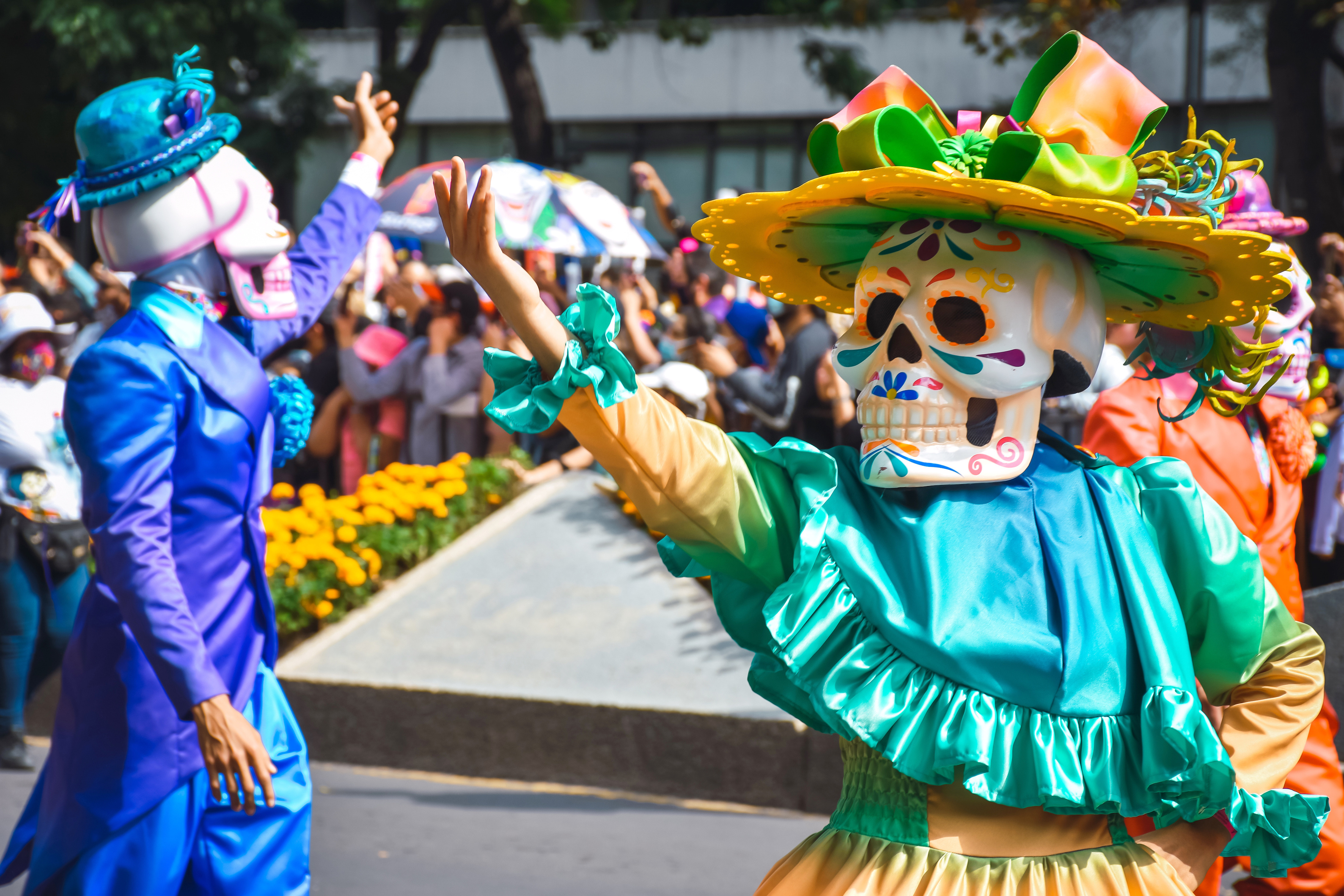
What do people do on Dia de los Muertos?
#1 Create an ofrenda
Families set up altars in their homes or at cemeteries, adorned with photographs, candles, marigolds, and the favorite items of deceased loved ones.

#2 Decorate sugar skulls
People decorate sugar skulls with colorful icing and often write the names of deceased family members on them.

#3 Visit the graves of loved ones
Families gather at cemeteries to clean and decorate the graves of their loved ones, often spending time in reflection and prayer.

#4 Make Papel Picado
Create intricate paper banners with colorful designs and hang them as decorations.

#5 Indulge in face painting
Many people paint their faces as sugar skulls or other Dia de los Muertos-themed designs like alebrijes, which are brightly coloured fantastical Mexican folk creatures.

Food at Dia de los Muertos

Sweet, round bread often decorated with sugar and shaped like skulls and bones. It's a centerpiece of Dia de los Muertos altars.
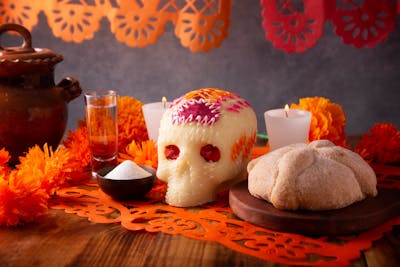
Intricately decorated sugar skulls are symbolic and sometimes eaten as treats.
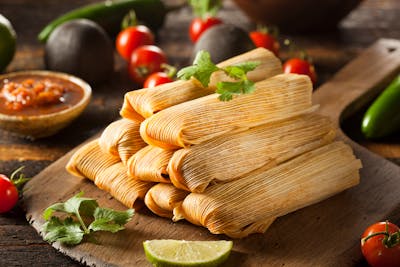
These filled masa dough pockets wrapped in corn husks or banana leaves are a Dia de los Muertos staple, coming in various savory and sweet flavors.
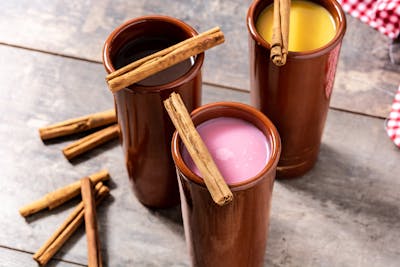
A warm and sweet drink made from masa (corn dough) and flavored with cinnamon or vanilla. It's often enjoyed with pan de muerto.

A rich and flavorful sauce made from chocolate, chiles, and spices, often served over chicken or turkey.
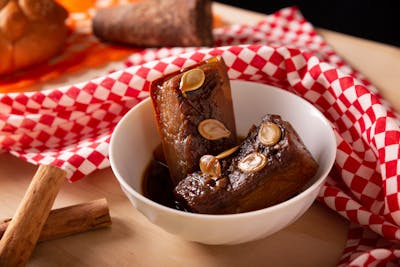
Pumpkin cooked in syrup, sometimes flavored with spices like cinnamon.
Things to know about Dia de los Muertos
- Dia de los Muertos is not a Mexican version of Halloween. It's a deeply rooted tradition that predates Halloween and has indigenous roots, particularly from the Aztec civilization.
- It's a multi-day celebration, usually taking place from October 31st to November 2nd, with different regions in Mexico having their unique customs and variations.
- The holiday is a blend of indigenous beliefs and Catholicism. It combines Aztec rituals honoring the goddess Mictecacihuatl (Lady of the Dead) with the Catholic observance of All Saints' Day and All Souls' Day.
- Ofrendas (altars) are central to the celebration. Families create elaborate altars in their homes or at cemeteries, adorned with marigolds, sugar skulls, candles, and the favorite foods and beverages of their deceased loved ones.
- Marigolds, or "cempasúchil" in Spanish, are considered the flowers of the dead and are used to guide spirits back to the living world! Their vibrant orange and yellow colors are thought to represent the sun.
- La Catrina is a famous Dia de los Muertos symbol. It's an elegant skeleton lady, often depicted wearing a fancy hat and clothing. She serves as a reminder that death is a natural part of life.
- Celebrations can vary by region. In some areas, people visit cemeteries and spend the night with their deceased loved ones, while in others, there are parades, music, and dancing.
- Papel picado is intricate paper art used for decoration during Dia de los Muertos. These paper banners are often hung around altars and streets.
- Dia de los Muertos has inspired various forms of art, including literature, music, and movies, such as the animated film "Coco," which beautifully portrays the holiday's traditions.


